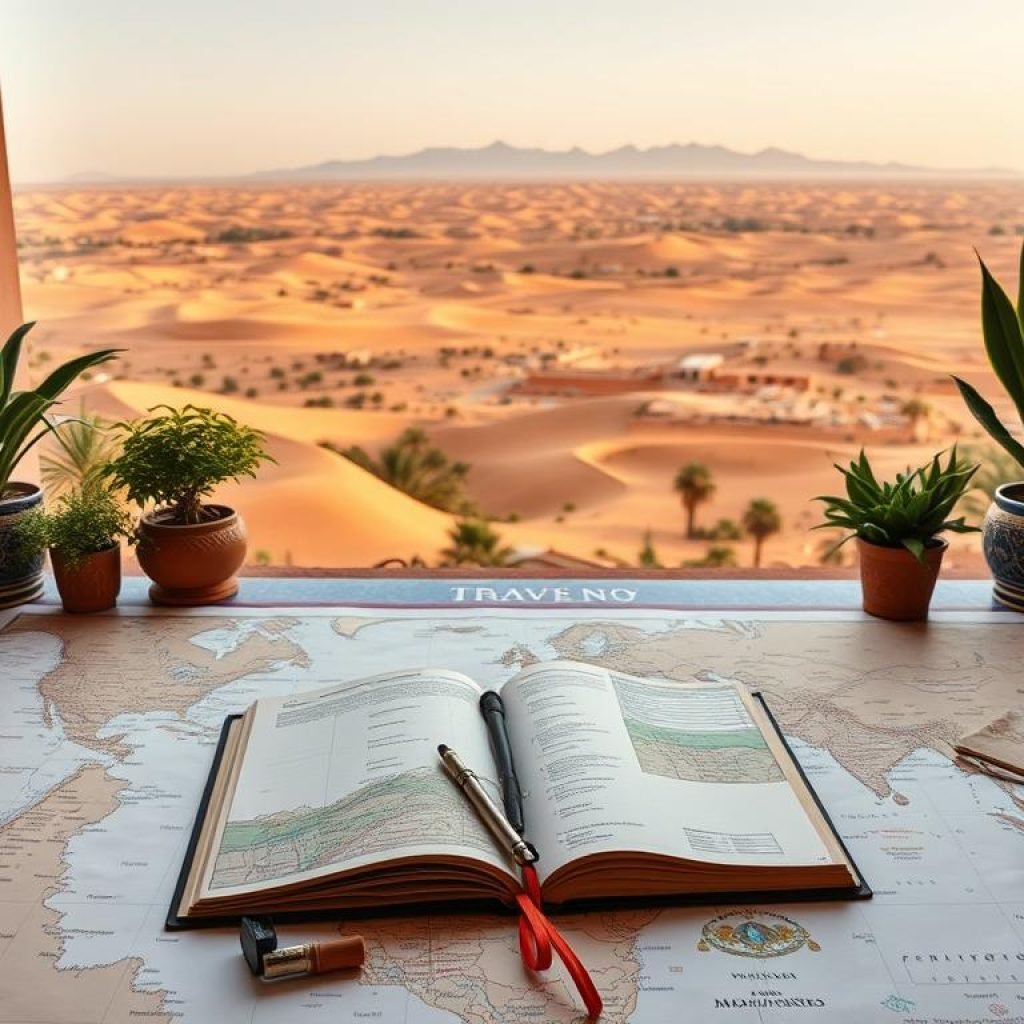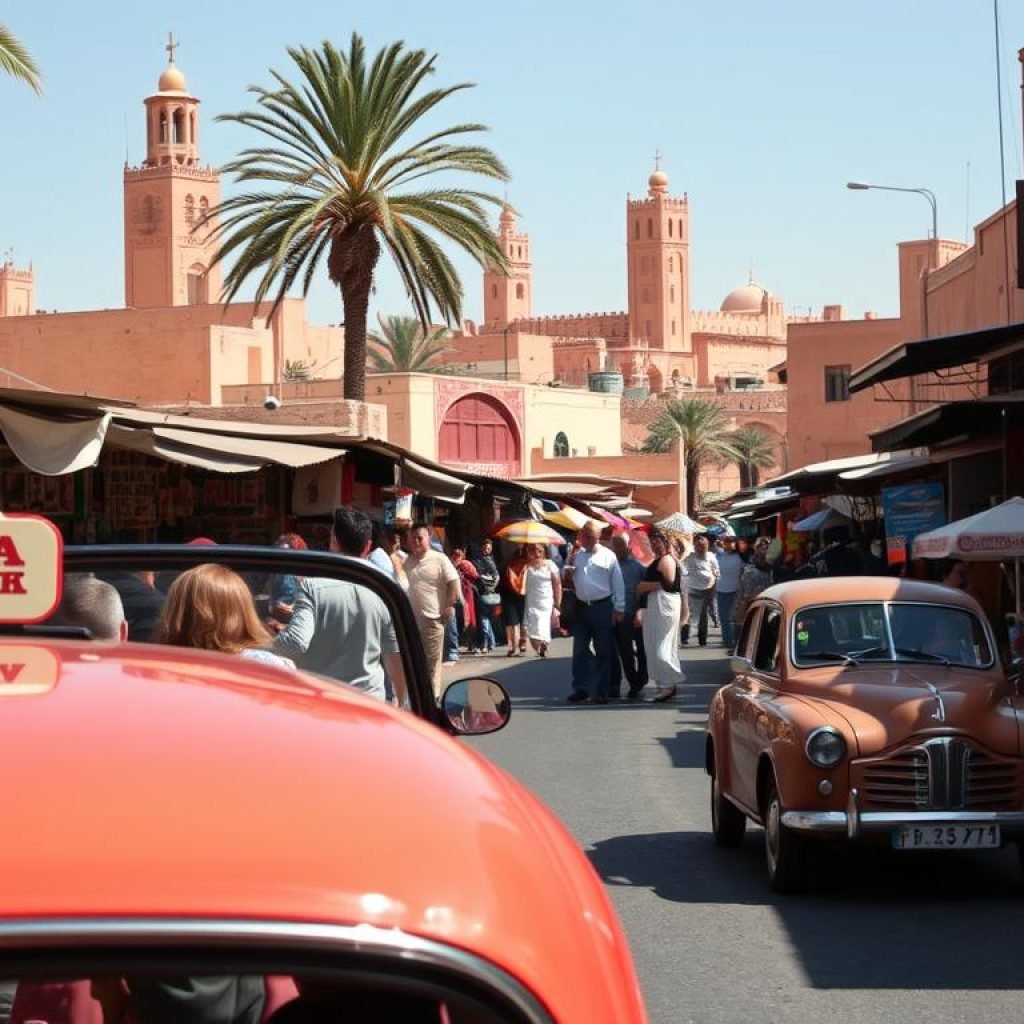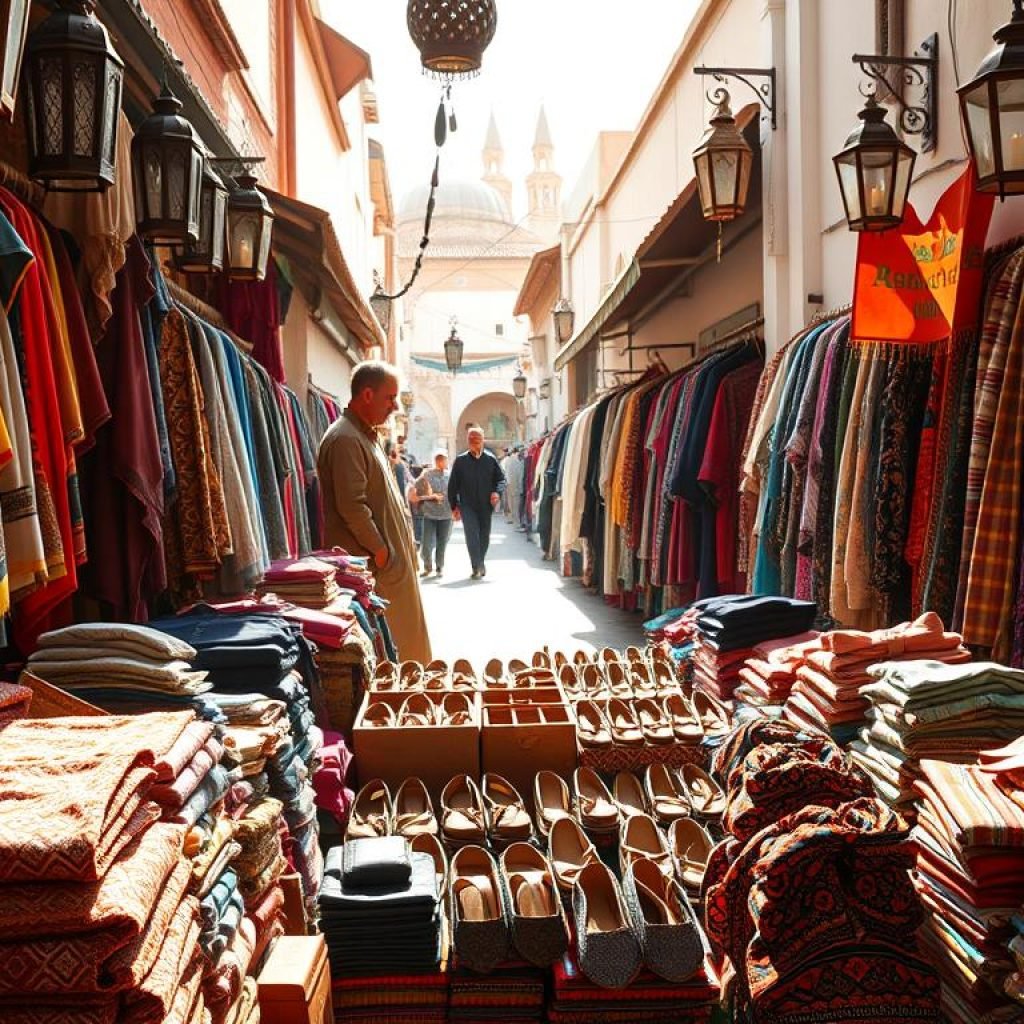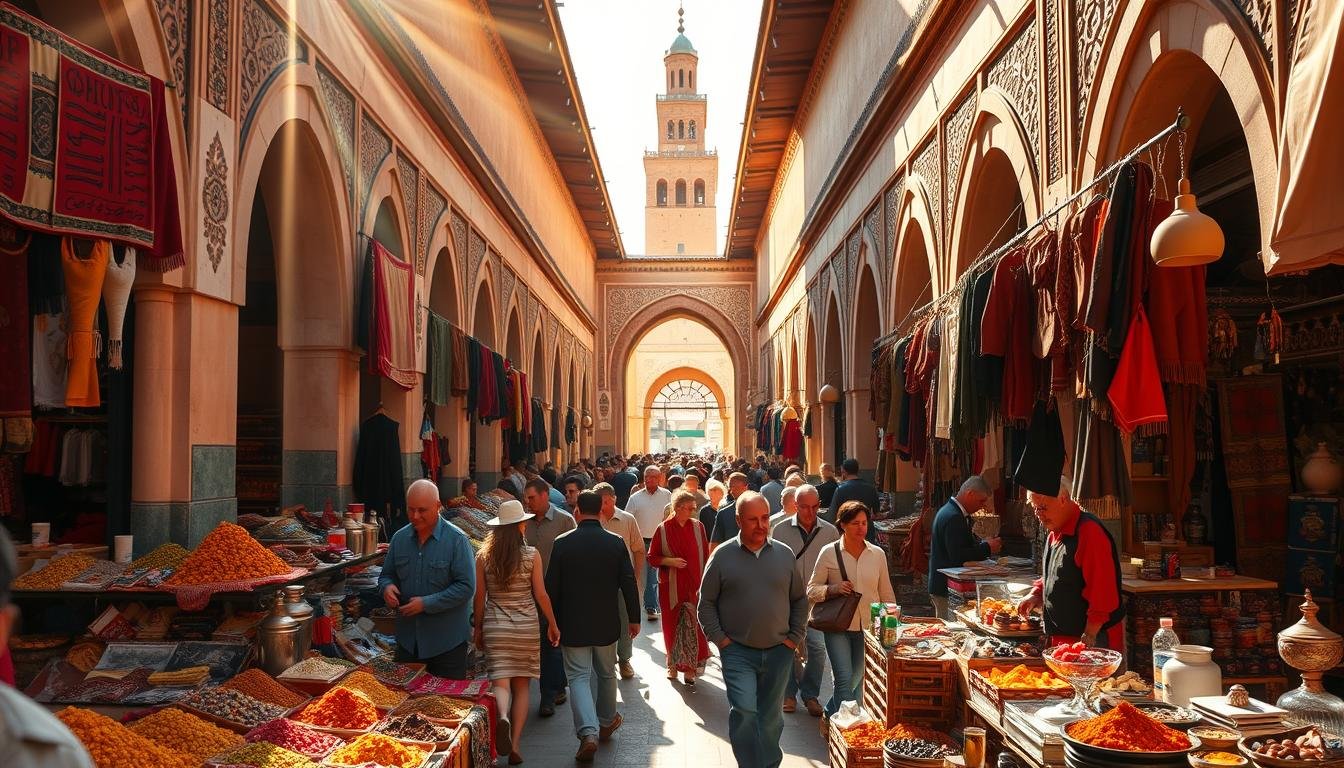Stepping into Morocco feels like entering a world where time slows down, and every corner tells a story. From the vibrant streets of Marrakech to the serene desert landscapes, this country offers an experience unlike any other. Whether you’re navigating bustling markets or sipping mint tea in a traditional riad, Morocco invites you to embrace its rich culture and warm hospitality.
For first-time visitors, planning a trip to this enchanting destination can feel overwhelming. But with the right guidance, you can explore with confidence. This article shares 10 essential tips to help you make the most of your journey. From understanding local customs to mastering transportation, these insights will ensure a seamless and memorable adventure.
Drawing from real-life experiences and expert advice, this guide covers everything you need to know. Whether you’re arriving at Casablanca’s airport or wandering through ancient medinas, these tips will help you navigate Morocco’s unique charm. Let’s dive in and prepare for an unforgettable experience.
Key Takeaways
- Morocco offers a blend of vibrant cities and serene landscapes, perfect for first-time visitors.
- Understanding local customs and etiquette is crucial for a smooth experience.
- Transportation in Morocco can be unique; knowing your options helps you navigate easily.
- Dressing modestly and respecting cultural norms enhances your visit.
- Planning ahead ensures you make the most of your time in this captivating country.
Discovering Morocco: An Overview of Culture and Travel Essentials
Morocco’s rich cultural tapestry invites visitors to explore its traditions and daily life. From the bustling streets of Marrakech to the serene landscapes of the Atlas Mountains, every corner of this country tells a story. Understanding its customs and etiquette is key to a meaningful experience.
Understanding Moroccan Etiquette and Traditions
Respect for local customs is essential in Morocco. Dress modestly, especially when visiting religious sites. Covering shoulders and knees is a sign of respect. Greetings are important; a simple “Salam alaykum” (peace be upon you) goes a long way.
Family plays a central role in Moroccan society. It’s common to see extended families living together and supporting one another. This sense of community is reflected in daily interactions and social gatherings.
Key Cultural Nuances for First-Time Visitors
Language can be a bridge to deeper connections. While Arabic is the official language, many Moroccans also speak French or Berber. Learning a few basic phrases can enhance your experience and show respect for the local culture.
Engaging a local guide can provide valuable insights into traditions and hidden gems. They can help navigate the vibrant markets and explain the significance of historical sites. As one traveler noted,
“A good guide transforms a trip into a journey of discovery.”
Finally, be mindful of subtle nuances. For example, avoid public displays of affection and always ask for permission before taking photos of people. These small gestures demonstrate cultural awareness and respect.
Planning Your Itinerary in Morocco
Creating an itinerary for Morocco is about blending must-see spots with room for unexpected discoveries. This country offers a mix of bustling cities, serene landscapes, and rich cultural experiences. A flexible schedule allows you to adapt to local events, weather, or spontaneous opportunities.

Setting a Flexible Schedule
While it’s tempting to pack your schedule, leaving room for spontaneity can enhance your trip. For example, a sudden invitation to a local celebration or an extra day in the desert can become unforgettable memories. Balance planned activities with free time to explore at your own pace.
Timing is key. Visit popular attractions early in the day to avoid crowds. Travel between cities like Marrakech and Fes can take several hours, so plan accordingly. A flexible approach ensures you don’t feel rushed and can fully enjoy each destination.
Must-See Destinations and Experiences
Morocco’s diversity means there’s something for everyone. Start with the historic medinas, where narrow streets lead to vibrant souks and hidden gems. The Sahara Desert offers a stark contrast, with its golden dunes and starry nights.
Don’t miss the Atlas Mountains, where traditional Berber villages provide a glimpse into local life. Coastal cities like Essaouira add a refreshing touch with their breezy beaches and historic ramparts. Each place tells a unique story, enriching your journey.
Using a local guide can elevate your experience. They can share insights into the culture and take you to lesser-known spots. As one traveler noted,
“A good guide transforms a trip into a journey of discovery.”
Finally, align your plans with local events or festivals. These occasions offer a deeper connection to the country and its traditions. Whether it’s a bustling market or a quiet village, Morocco’s charm lies in its ability to surprise and delight.
Navigating Transportation Options in Morocco
Getting around Morocco requires a mix of planning and adaptability to navigate its diverse transportation options. Whether you’re flying between cities or exploring local streets, understanding the system ensures a smooth journey.
Air Travel, Ferries, and Domestic Flights
For long distances, domestic flights are a time-saving choice. Airlines like Royal Air Maroc connect major hubs such as Casablanca and Marrakech. For example, a flight from Marrakech to Errachidia takes just one hour, compared to an eight-hour drive.
Ferries are another option, especially for coastal routes. They offer a scenic way to travel and are often more affordable than flights. Plan ahead to secure tickets during peak seasons.
Local Transit: Trains, Buses, and Taxis
Trains are a reliable and comfortable way to travel between cities. The high-speed Al Boraq train connects Tangier and Casablanca in just over two hours. For shorter distances, ONCF’s national rail service covers most major destinations.
Buses, particularly those operated by CTM and Supratours, are another popular choice. They’re affordable and often faster than private services. For local trips, taxis are widely available. In cities like Marrakech, you’ll find both petit (small) and grand (large) taxis. Shared grand taxis are a cost-effective option for inter-city travel.
“Choosing the right mode of transport can make or break your day. Plan ahead and stay flexible to adapt to local schedules.”
| Transport Mode | Advantages | Considerations |
|---|---|---|
| Domestic Flights | Fast, saves time | Higher cost, limited routes |
| Trains | Comfortable, scenic | Limited to major cities |
| Buses | Affordable, extensive network | Longer travel time |
| Taxis | Convenient, flexible | Negotiate fares beforehand |
When planning your travel day, avoid rush hours to save time and reduce stress. Always confirm schedules and book tickets in advance when possible. With the right guide and preparation, navigating Morocco’s transportation system becomes an adventure in itself.
Smooth Arrivals: From Casablanca to Marrakech
Arriving in Casablanca is the first step to immersing yourself in the vibrant rhythm of this North African gem. The city’s Mohammed V International Airport is a hub of activity, and navigating it smoothly sets the tone for your journey. Whether you’re heading straight to Marrakech or exploring Casablanca first, these tips will ensure a seamless transition.

Airport and Bus Terminal Tips
Upon landing, follow signs to the arrivals hall where you’ll find currency exchange counters and ATMs. It’s wise to exchange a small amount of cash for immediate needs like taxi fares or quick purchases. Keep your tickets and documents secure, as they’re essential for boarding buses or trains.
For those heading to Marrakech, the train station is conveniently located within the airport. The journey takes about three hours and offers a comfortable way to travel. Alternatively, buses like CTM provide affordable options, but be sure to book tickets in advance to avoid long waits.
“Having a local SIM card or access to Wi-Fi can be a lifesaver when navigating transportation hubs.”
If you prefer a taxi, negotiate the fare before starting your trip. Shared grand taxis are a cost-effective choice for inter-city travel. Be alert and ready to handle minor details, such as confirming your destination and ensuring your luggage is secure.
Timing is crucial. Arriving early at the bus terminal or train station can save you stress and ensure you secure a seat. Plan your time wisely to avoid rushing, especially during peak hours. With these strategies, your transition from Casablanca to Marrakech will be smooth and enjoyable.
Managing Money and Payment Methods in Morocco
Managing finances in Morocco requires a blend of preparation and adaptability to navigate its unique monetary system. The country operates on a closed currency system, meaning the dirham cannot be exchanged outside its borders. This makes planning ahead essential for a smooth experience.
Currency Exchange and ATM Practices
Cash is king in many areas, especially in smaller towns and markets. While larger cities accept cards, smaller establishments often operate on a cash-only basis. ATMs are widely available and offer competitive exchange rates, making them a convenient option for withdrawing local currency.
When exchanging money, avoid airport kiosks as they typically charge higher fees. Instead, use banks or authorized exchange offices in urban centers. Carrying a small amount of cash for tips and small purchases is also recommended.
“Always notify your bank before traveling to ensure your card works internationally. This simple step can save you a lot of hassle.”
Learning a few phrases in Arabic can be helpful. For example, asking “Ayna al-ATM?” (Where is the ATM?) or “Kam al-sa’ir?” (What is the exchange rate?) can make transactions smoother. This shows respect for the local language and culture.
Safety Tips for Handling Money
Be mindful of your surroundings when using ATMs, especially in busy areas. Guard your cash and avoid displaying large amounts in public. Splitting your money between different pockets or bags can reduce the risk of loss or theft.
Finally, plan your time wisely. ATMs can sometimes run out of cash, particularly during weekends or holidays. Having a backup plan ensures you’re never left stranded without funds.
| Method | Advantages | Considerations |
|---|---|---|
| ATMs | Convenient, competitive rates | May run out of cash |
| Banks | Reliable, lower fees | Limited operating hours |
| Exchange Offices | Authorized, fair rates | Higher fees in airports |
Essential Packing and Dressing Tips
Choosing the right attire and accessories is essential for a comfortable and culturally respectful experience in this vibrant country. From bustling cities to serene deserts, dressing appropriately and packing smartly ensures a seamless adventure.

Dressing Modestly in Respect of Local Customs
Modesty is key when visiting religious sites or exploring rural areas. Women should cover their shoulders and knees, while men are encouraged to wear long pants and shirts. A lightweight scarf is a versatile accessory for both modesty and sun protection.
In urban centers like Marrakech, dress codes are more relaxed, but it’s still wise to avoid revealing clothing. As one traveler noted,
“Respecting local traditions opens doors to deeper connections and smoother interactions.”
Must-Have Travel Accessories
Packing for diverse climates requires thoughtful preparation. Lightweight layers are ideal for day trips, while warmer clothing is essential for cooler nights in the desert or mountains. A sturdy pair of walking shoes is a must for exploring cobblestone streets and rugged terrain.
Don’t forget essentials like sunscreen, a wide-brimmed hat, and a reusable water bottle. These items ensure you stay comfortable and hydrated throughout your journey. For those planning to stay in a hotel, a swimsuit is useful for private pools.
Finally, a day bag with secure compartments is perfect for carrying belongings in crowded areas. Packing smartly allows you to focus on enjoying every place you visit.
Staying Safe and Communicating Effectively
Exploring Morocco safely and communicating effectively can enhance your journey significantly. From navigating bustling medinas to interacting with locals, a few key strategies can make all the difference. Here’s how to stay safe and connect meaningfully during your visit.
Language Basics and Helpful Phrases
Learning a few phrases in Arabic can go a long way. Simple greetings like “Salam alaykum” (peace be upon you) or “Shukran” (thank you) show respect and help break the ice. For more complex conversations, tools like Google Translate can be invaluable.
When shopping or dining, knowing phrases like “Kam al-thaman?” (How much does it cost?) or “Hal tatakallam al-ingliziyya?” (Do you speak English?) can make interactions smoother. These small efforts show appreciation for the local language and culture.
Local Safety and Navigation Tips
In busy areas like souks, keep your cash and belongings secure. Avoid displaying large amounts of money and use a money belt or hidden pouch. Be mindful of your surroundings, especially in crowded or poorly lit areas.
Carry a reusable water bottle with a filter to stay hydrated safely. This is particularly useful in warmer climates or during long excursions. For navigation, download offline maps or use apps like Maps.me to avoid getting lost in winding medinas.
“A little preparation and awareness can transform your experience, making it both safe and enjoyable.”
When shopping, negotiate politely but firmly. Vendors often expect haggling, so start with a lower offer and work your way up. This is part of the local shop culture and can be a fun way to engage with sellers.
Finally, respect local customs, especially around food and drink. Always ask before taking photos of people or their property. These small gestures show cultural awareness and help you connect more authentically with the community.
For more insights on navigating Morocco’s diverse landscapes, check out this guide to Morocco road trips.
Exploring Moroccan Cuisine and Dining Etiquette
Moroccan cuisine is a vibrant blend of flavors, traditions, and cultural influences that captivate every visitor. From the aromatic spices of tagines to the sweetness of mint tea, every dish tells a story. Whether you’re dining in a bustling restaurant or sampling street food in a market, the experience is unforgettable.
Must-Try Dishes and Traditional Foods
Moroccan food is known for its rich flavors and diverse ingredients. Signature dishes like tagine, couscous, and pastilla are must-tries. Tagine, a slow-cooked stew, comes in varieties like chicken with preserved lemon and lamb with prunes. Couscous, the national dish, is often served on Fridays as a communal meal.
Don’t miss out on street food favorites like Maakouda (potato fritters) and Sfenj (Moroccan donuts). These treats are perfect for a quick bite while exploring the markets of Marrakech. For dessert, try Chebakia, a sesame cookie often enjoyed during Ramadan.
Dining Cultures and Eating Customs
Dining in Morocco is a communal experience. Meals are often shared from a central platter, and it’s customary to eat with your right hand. When invited to a local home, remember to remove your shoes and wash your hands before eating. The host will usually bless the food with “bismillah” before the meal begins.
In restaurants, be respectful and patient. Waitstaff appreciate polite communication, and it’s common to ask about ingredients if you have dietary restrictions. As one traveler noted,
“Engaging with the local dining culture opens doors to deeper connections and unforgettable experiences.”
Street food is a highlight of any tour. Vendors in the medinas offer everything from grilled meats to fresh juices. Always ensure the food is freshly prepared and served hot. Trying unfamiliar dishes is part of the adventure, so don’t hesitate to explore.
| Dish | Description | Best Place to Try |
|---|---|---|
| Tagine | Slow-cooked stew with meat and vegetables | Local restaurants |
| Couscous | Steamed semolina with vegetables and meat | Family homes on Fridays |
| Pastilla | Sweet and savory pie with meat and almonds | Specialty eateries |
| Maakouda | Crispy potato fritters | Street vendors |
Respect for local customs is key. Avoid public displays of affection and always ask before taking photos of people or their food. These small gestures show cultural awareness and enhance your experience.
Experiencing Authentic Markets and Souks
The bustling souks of Morocco are a sensory overload of colors, scents, and sounds. These vibrant markets are more than just places to shop—they are cultural hubs where tradition meets daily life. From the narrow alleys of Marrakech to the artisan workshops in Fes, every corner tells a story of craftsmanship and heritage.
Navigating these markets can be overwhelming, but with the right approach, it becomes an unforgettable experience. Whether you’re hunting for leather goods, spices, or handmade rugs, understanding the local culture and bargaining etiquette is key. Here’s how to make the most of your visit.
Mastering the Art of Haggling
Haggling is an integral part of shopping in Moroccan souks. Vendors often start with prices much higher than what they expect to receive. The key is to negotiate politely but firmly. Start by offering half the initial price and work your way up. Remember, it’s a shared social experience, not a confrontation.
Keep a friendly attitude and don’t rush the process. As one traveler noted,
“Haggling is less about the money and more about the connection you build with the seller.”
If the vendor doesn’t agree to your offer, be prepared to walk away. Often, they’ll call you back with a better deal. This strategy ensures you get a fair price while respecting the local culture.
Shopping Tips and Local Bargaining Tricks
Understanding the layout of the souks can give you an edge. Markets are typically divided by product type—leather goods in one area, spices in another. This organization helps you compare prices and quality more effectively. Always carry cash, as many vendors don’t accept cards.
For women, it’s helpful to shop with a local or in groups. This can make the experience more comfortable and reduce the chances of overpaying. Be mindful of your surroundings and keep your belongings secure, especially in crowded areas.
Here’s a quick guide to common items and their typical price ranges:
| Item | Price Range (MAD) | Tips |
|---|---|---|
| Leather Bag | 200-500 | Check stitching quality |
| Spices (per kg) | 50-150 | Buy from trusted vendors |
| Handmade Rug | 800-2000 | Negotiate based on size |
Finally, enjoy the process. Shopping in Moroccan souks is as much about the experience as it is about the purchases. Embrace the chaos, savor the scents, and take home a piece of this vibrant destination.
Morocco travel tips for first-timers: Insider Advice
Navigating Morocco’s vibrant streets and hidden gems becomes effortless with the right local guidance. Hiring a certified guide can transform your experience, offering deeper insights into the culture and history. Here’s how to make the most of your journey while avoiding common pitfalls.
Finding Reputable Local Guides
When selecting a guide, always opt for certified professionals. Unofficial offers may seem tempting, but they often lack the expertise and reliability of licensed providers. Look for recommendations from trusted sources or use official channels like tourist offices.
Certified guides not only ensure safety but also enrich your tour with stories and details you might otherwise miss. As one traveler shared,
“A good guide doesn’t just show you places—they help you understand them.”
Avoiding Common Scams
Be cautious of overpriced services, especially in bustling areas like medinas or bus stations. Always confirm the price upfront and avoid paying in full before the service is completed. Carrying small amounts of cash can also help you manage expenses better.
At bus stations, use official ticket counters to avoid inflated fares. If you’re unsure, ask for assistance from staff or fellow travelers. Taking these precautions can save you both money and stress.
Negotiating Fair Prices
Bargaining is a cultural norm in Morocco, but it’s important to approach it respectfully. Start by offering half the initial price and work your way up. Keep the interaction friendly, as haggling is often seen as a social exchange rather than a confrontation.
Here are some tips for successful negotiations:
- Research average prices beforehand to avoid overpaying.
- Be prepared to walk away if the price isn’t right.
- Use local phrases to show respect and build rapport.
By taking the time to vet your guide and negotiate fairly, you’ll enjoy a smoother and more authentic experience. Connecting with experienced locals not only enhances your tour but also provides a deeper understanding of this captivating country.
Discovering Hidden Gems: Berber Villages and Desert Escapades
Venturing beyond Morocco’s bustling cities reveals a world of serene Berber villages and breathtaking desert landscapes. These hidden gems offer a chance to connect with the country’s rich heritage and natural beauty. From camel rides across golden dunes to glamping under starry skies, these experiences redefine what it means to explore.
Camel Rides, Glamping, and Off-the-Beaten-Path Experiences
A camel trek through the Sahara is a quintessential experience. The rhythmic sway of the camel and the vast expanse of sand create a sense of timelessness. For those seeking comfort, glamping camps offer luxurious tents with modern amenities, blending adventure with relaxation.
Exploring Berber villages provides a glimpse into a way of life that has remained unchanged for centuries. These communities are known for their hospitality and craftsmanship. Staying in a traditional guesthouse or hotel allows you to immerse yourself in their culture and traditions.
“The desert teaches you patience, and the Berber people teach you humility. It’s a journey that stays with you forever.”
Uncovering Morocco’s Scenic Landscapes
The Atlas Mountains are a haven for hikers and nature lovers. Trails wind through lush valleys and rugged peaks, offering stunning views. The Anti-Atlas region, with its ancient kasbahs and dramatic terrain, is equally captivating.
Planning your trip during the right month is crucial. Spring and autumn offer mild weather, ideal for outdoor activities. Summer can be scorching, especially in the desert, while winter brings cooler temperatures and occasional rain.
Here’s a quick guide to essential preparations:
| Item | Purpose | Tips |
|---|---|---|
| Water | Stay hydrated | Carry 4-5 liters per day in the desert |
| Clothing | Protection from sun and cold | Layer for mountain hikes |
| Footwear | Comfort on uneven terrain | Choose sturdy hiking boots |
For a deeper dive into planning your desert adventure, check out this guide to Morocco desert tours. Whether you’re exploring the Sahara or the Atlas Mountains, these hidden gems promise an unforgettable experience.
Conclusion
Exploring this vibrant destination offers a blend of cultural richness and practical insights. From mastering the art of haggling in bustling markets to navigating local transportation, preparation is key. Learning a few phrases in the local language can enhance your experience and foster meaningful connections.
Using a certified guide ensures you uncover hidden gems while staying safe. Respecting local customs, such as modest dressing and polite bargaining, shows cultural awareness. Managing your card and cash wisely helps avoid unnecessary stress during your journey.
Approach each part of your adventure with an open mind. Share your experiences with family and friends once you’re back home. This journey is more than a trip—it’s a unique life experience that enriches your story.




Comment (0)